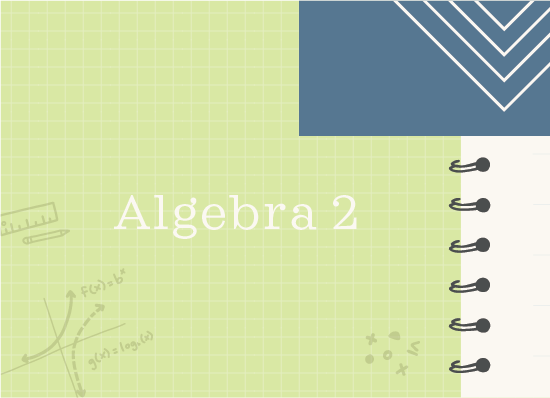How to find the center and radius of a circle from its equation
What is the standard form for the equation of a circle?
In this lesson we’ll look at how to write the equation of a circle in standard form in order to find the center and radius of the circle.
Hi! I'm krista.
I create online courses to help you rock your math class. Read more.
The standard form for the equation of a circle is
???(x-h)^2+(y-k)^2=r^2???
where ???r??? is the radius and ???(h,k)??? is the center.
Sometimes in order to write the equation of a circle in standard form, you’ll need to complete the square twice, once for ???x??? and once for ???y???.
Putting the equation of a circle into standard form, and then finding its center and radius from the standard form
Take the course
Want to learn more about Algebra 2? I have a step-by-step course for that. :)
Step-by-step examples of finding the center and radius of circles
Example
Find the center and radius of the circle.
???x^2+y^2+24x+10y+160=0???
In order to find the center and radius, we need to change the equation of the circle into standard form, ???(x-h)^2+(y-k)^2=r^2???, where ???h??? and ???k??? are the coordinates of the center and ???r??? is the radius.
In order to get the equation into standard form, we have to complete the square with respect to both variables.
Grouping ???x???’s and ???y???’s together and moving the constant to the right side, we get
???(x^2+24x)+(y^2+10y)=-160???
Completing the square requires us to take the coefficient on the first degree terms, divide them by ???2???, and then square the result before adding the result back to both sides.
The coefficient on the ???x??? term is ???24???, so
???\frac{24}{2}=12???
???12^2=144???
The coefficient on the ???y??? term is ???10???, so
???\frac{10}{2}=5???
???5^2=25???
Therefore, we add ???144??? inside the parentheses with the ???x??? terms, ???25??? inside the parenthesis with the ???y??? terms, and we also add ???144??? and ???25??? to the right with the ???-160???.
???(x^2+24x +144)+(y^2+10y+25)=-160 + 144+25???
Factor the parentheses and simplify the right side.
???(x+12)^2+(y+5)^2=9???
Therefore, the center of the circle is at ???(h,k)=(-12,-5)??? and its radius is ???r=\sqrt{9}=3???.
Let’s do another.
Sometimes in order to write the equation of a circle in standard form, you’ll need to complete the square twice, once for x and once for y.
Example
What is the center and radius of the circle?
???6x^2+6y^2+12x-13=0???
In order to find the center and radius, we need to change the equation of the circle into standard form, ???(x-h)^2+(y-k)^2=r^2???, where ???h??? and ???k??? are the coordinates of the center and ???r??? is the radius.
In order to get the equation into standard form, we have to complete the square with respect to ???x???. The ???y??? term is already a perfect square.
Let’s begin by collecting like terms and moving the ???-13??? to the right.
???6x^2+12x+6y^2=13???
Our next step is to remove the coefficients of the second degree terms of the ???x??? variable and ???y??? variable. First, we’ll factor out a ???6??? then divide by ???6??? on both sides.
???6(x^2+2x+y^2)=13???
???x^2+2x+y^2=\frac{13}{6}???
Now complete the square of the ???x??? terms. The ???y??? term is already a perfect square.
???(x^2+2x)+y^2=\frac{13}{6}???
Completing the square requires us to take the coefficient on the first degree term, divide it by ???2???, then square the result before adding the result back to both sides.
The coefficient on ???x??? is ???2???, so
???\frac{2}{2}=1???
???1^2=1???
We’ll therefore add ???1??? to both sides, and get
???(x^2+2x+1)+y^2=\frac{13}{6}+1???
Factor the ???x??? terms and simplify the right hand side.
???(x+1)^2+y^2=\frac{19}{6}???
If you want, you may also write the equation as
???(x+1)^2+(y+0)^2=\frac{19}{6}???
The center of the circle ???(h,k)??? is ???(-1,0)??? and the radius is ???\sqrt{19/6}???. Rule out ???-\sqrt{19/6}??? because a radius can't be negative.






